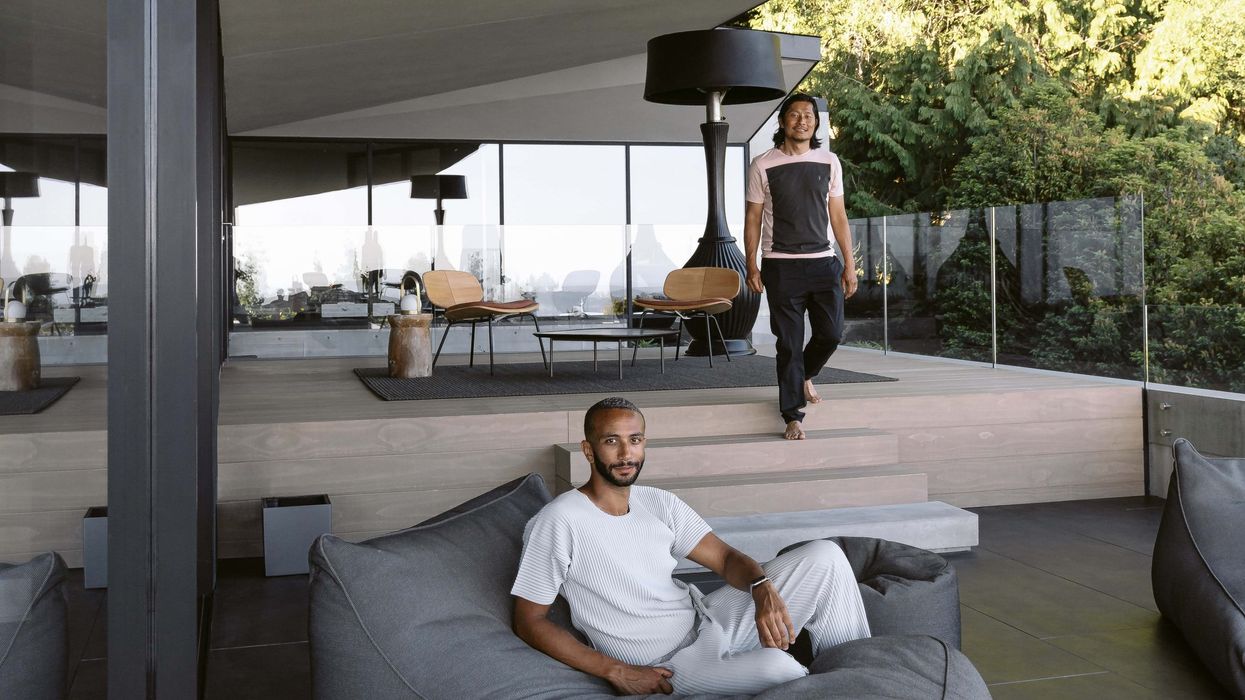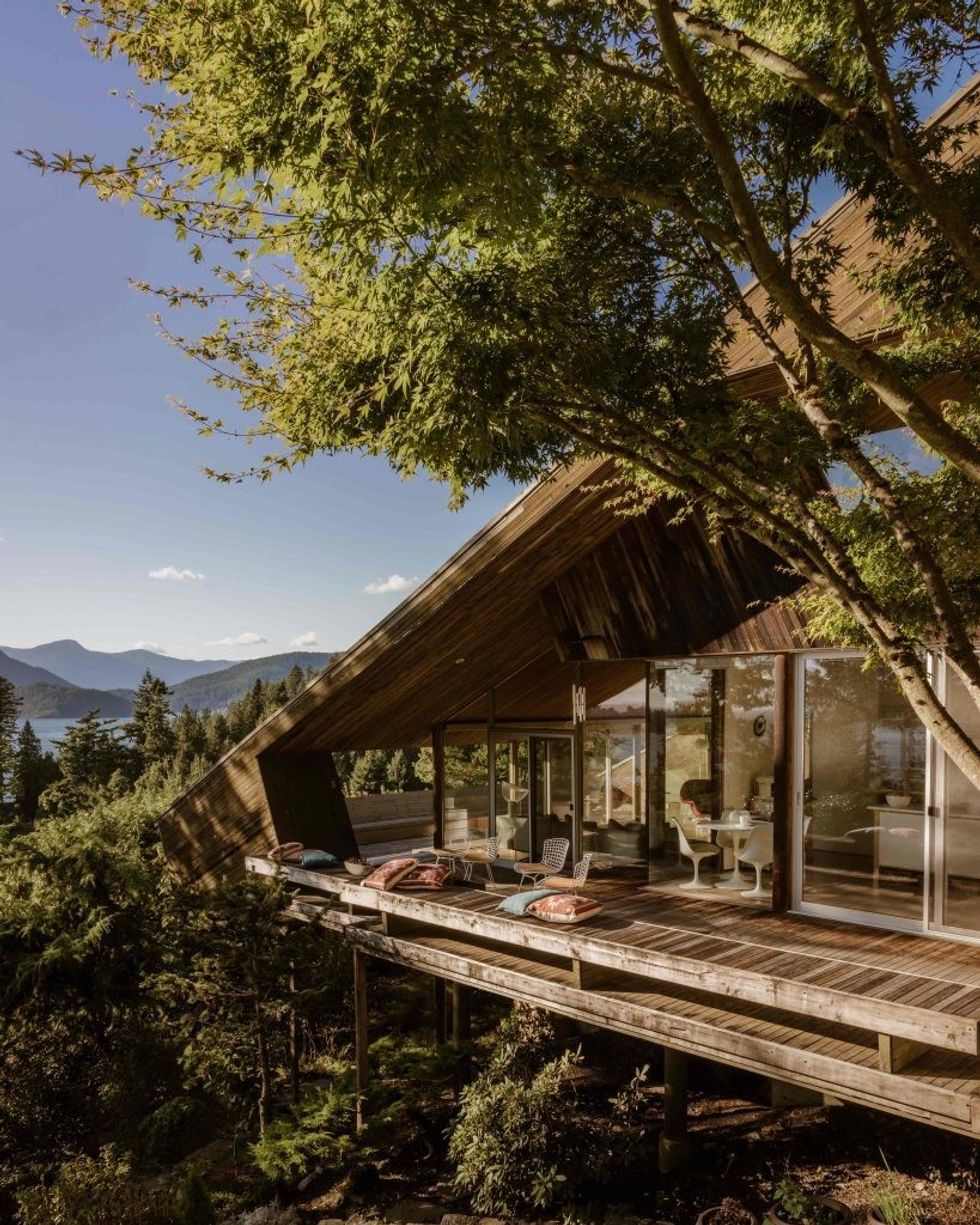Not one of the midcentury modern homes that realtor Trent Rodney has sold in the last five years ended up demolished.
That’s quite the feat, considering that more than half of midcentury houses that are sold in the area are demolished, says the West Vancouver realtor. Instead of appreciating their architectural merit, properties that come up for sale are too often marketed as having “development potential.” Rodney discovered that there is actually a lot of demand for the existing houses, and buyers are willing to pay top dollar. He just had to market to those buyers instead of the ones who wanted massive houses.
“We haven’t had one demolition. Not one… And they are paying a premium, frankly, right, so that’s the fee formula. In the past year, we sold 15 midcentury moderns, and we have a 100% success rate saving them.”
When he decided to go into real estate, he chose a niche market that was readily available in his own backyard: those are architectural gems that came out of a movement that began in the 1950s and flourished up and down the west coast.
The southern part of BC attracted some of the movement’s best architecture over the decades, work that was especially focused on the use of natural resources and its relationship with nature.
Heritage expert Robert Lemon said the houses represent a sustainable use of space, which, ironically, has been lost in an era when it should matter most. Lemon has a new book out, An Architect’s Address Book: the places that shaped a career, from ORO Editions. The publisher also released a series of books on West Coast Modern architecture.
“Those houses are so vulnerable as they are usually tiny compared to what could be built today,” he said. “But weren’t they designed to be efficient and affordable, qualities that should be promoted now rather than every new home being an aspirational ‘luxury residence’?”
The houses are still vulnerable, he added.
“It’s admirable that Trent can find buyers for those fascinating houses -- the Ron Thoms, Fred Hollingsworths, and the Bob Lewis houses.”
The North Shore had the region’s best collection of midcentury modern homes because it was still an emerging municipality back in the day, with nothing but sea, mountains, and forest for a backdrop. However, hundreds of the houses have been demolished in recent years, including landmarks such as Ron Thom’s Dawson House at 4170 Rose Crescen in West Vancouver. The circa 1950 Forster Residence at 1160 Ridgewood Drive in North Vancouver, designed by Fred Hollingsworth, was illegally demolished last year.
A developer who wanted a bigger house tore down Arthur Erickson and Geoffrey Massey’s spectacular wood-and-glass, 3,500 square-foot Graham House, built in 1962. Perched on a rocky slope, the multi-storey Graham House was a precious artwork, forever lost. That loss was particularly painful, said Lemon.
Midcentury houses aren’t the only legacy buildings ending up in the landfill. Even Klee Wyck, a house where Emily Carr painted her famous paintings was torn down. The owner had left it to the District for use as an arts amenity, however the District failed to maintain it over the decades and it fell into disrepair.
It didn’t help that the real estate profession typically marketed the properties as having “development potential.” Rodney, who was working on an architecture degree at the time, saw all the wasteful destruction and decided to make use of his years working in marketing and promotion instead. He went into real estate, starting at a luxury real estate firm and working alongside realtor Jason Choi, before they decided to start their own boutique firm, West Coast Modern.
Rodney is the frontman; Choi handles the transactions. It was a unique take, combining commerce with the preservation of art, which is how Rodney and his growing client list view the landmark houses. Today, he has around 25,000 subscribers in his database.
And because he’s tapped into a midcentury modern fan base, he’s discovered people are willing to pay top dollar for the collectible houses, which typically sell for around $3 to $5 million. No longer teardowns, they are collectible gems.
Savvy buyers collect the houses the way others collect cars. He estimates that about 25% of his clients work in the tech industry. Others are musicians, athletes, filmmakers, artists, architects, and designers.
“To them, it’s like a work of art that they get to be custodian to,” says Rodney.
“I looked back over the sales recently, and I realized that everyone is so happy in their spaces.”
That said, he and Choi are also building a brand, a business that’s viable and also saves houses. And as the District of West Vancouver has seen, it’s a lot easier to save the houses when the consumer appreciates architecture, and not just square footage.
“We are not a museum. We are here to transact and move it to the next custodian, to turn something that is almost museum appreciation into commerce.”
They’ve sold houses that are beautifully maintained to ones that are in dire need of maintenance. A lot of the houses are modest by today’s standards, with only a couple of bathrooms and bedrooms. Others are iconic.
He says his biggest marketing endeavour was the cliff-topped Starship House, Arthur Erickson’s sharply angled cedar clad house in Horseshoe Bay, which was listed for $4.8 million. That listing had a global reach of millions of views after it went viral on social media and was featured on TV and in magazines like Architectural Digest, Elle Décor, and Sharp. That attracted global buyers who usually go to Palm Springs for their midcentury moderns. In the past, the only global buyers who bought such a house in BC were looking to tear it down, says Rodney. The buyer demographic has shifted.
“It’s architecture porn,” he says. “Everyone is like, ‘did you see that house?’ That was [the reaction] to this house.”
But his favourite houses are the undiscovered gems, those houses that don’t have a marquee name attached to them. They’re just lovely examples of great design. Bob Lewis, for example, was a prolific builder who wasn’t an architect, but understood midcentury modern design and built lovely homes. Rodney visits owners of Lewis homes and fills them in on their home’s history.
He compares Lewis to Joseph Richler, a California developer whose houses were informed by modern architects Frank Lloyd Wright and Richard Neutra. Like Lewis, Eichler built lovely homes that were also affordable. Rodney recently sold one at 516 W. 22nd St. in North Vancouver, for $2.3 million, after 13 days on the market.
Unfortunately, Lewis hasn’t been appreciated, so a lot of his houses have undergone renovations that don’t make sense. Rodney’s job is to steer homeowners in the right direction, advising them not to install vinyl windows, for example.
“I’ll tell them, ‘you are in a Bob Lewis, so don’t put in vinyl windows. It kills the vibe. I tell them, ‘use this guy, he inserts the glass into the existing cavity.’ I do a lot of that. It’s a big part of my job.
“They thought their house was a teardown, and they say, ‘you’re showing us this whole new world.’ That’s so rewarding.”






















